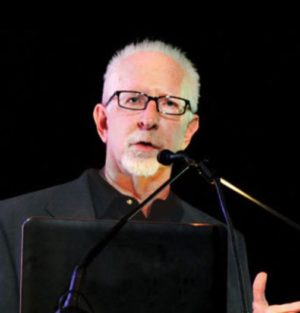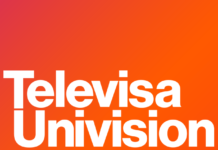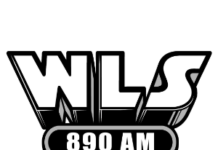
As AM radio’s historic week continues, Ford Motor Company backed down on its no-AM stance. This comes on the heels of the AM For Every Vehicle Act. What does this mean for radio’s fight and what do we need to know about Detroit? We talked with Jacobs Media founder and President Fred Jacobs about AM’s next steps.
Radio Ink: You live in Motor City and have extensively covered radio’s relationship with automakers over the years. What’s the mood there after the AM For Every Vehicle Act and the Ford news?
I think the surprising thing about all of this is that we tend to look at product cycles in the automotive industry as being three to five years, not three to five weeks. So I’m pleasantly caught off guard by this announcement. It’s gratifying.
I think on the one hand when Ford announced that it wasn’t going to have AM radio in any of its vehicles, electric or internal combustion, the concern was it would provide cover for other manufacturers to follow suit. I think what we may be looking at now is just the opposite, that Ford’s reversal will hopefully motivate other manufacturers to go not down this path and threaten AM radio.
I tried to, through some of my sources in the industry, get a sense of how Ford actually came to this decision. Was it research or was it something else? And I never really got a straight answer, which isn’t surprising. They’re not about to divulge how they make their strategic decisions. But for them to reverse something like this is a major league move and is a statement about the importance of radio in cars, but in American culture and society. So just remarkable that it came this quickly.
Radio Ink: Of course, there have been detractors. I know you’re a big CES guy and the Consumer Technology Association raised some ire by comparing the AM mandate to an 8-track mandate, in their words.
Fred Jacobs: Well, they always do that. That’s their thing. They’ve called radio a buggy whip industry before, so an 8-track industry is actually a step up. But what’s interesting about this is that this is not a government handout. This decision from Ford was not a government policy or a law enacted by Congress. It was good old pressure tactics to make the case that Ford ought to rethink its plan.
I appreciate that CTA announced that this was going to be a handout. But in fact, the opposite was proven here. Ford must have taken a look at some of the evidence that was put in front of them and opted well before any legislation was passed to rethink its decision. Good for them.
This is a free market decision. Ford looked at all the variables in play. Its customer network, its dealer network, the NAB, the radio industry, the whole nine yards. And obviously, came to the conclusion that without any laws being passed, it needed to rethink its posture.
Radio Ink: In its argument, CTA brought up that the other technology around AM and the emergency alert system should be improved. Some streaming execs have made statements saying that streaming is the only way forward for AM. You’re in that space. You just put out the Essential app with jācapps – is it eventually a hybrid solution?
It goes beyond that. Our sense with coming out with this affordable app program is that AM radio needs to think about its future in terms of making sure that it has the ability to continue to be heard. So, from that standpoint, I think that’s a good belt and suspenders tactic.
But as it relates to streaming versus broadcast? The fact is that cell towers are more likely to go down in the event of an emergency than broadcast towers are. If you go back over the last dozens of emergencies, be they weather or anything else, broadcasters clearly have been able to overcome. We have a better track record in spite of some of the bumps along the road.
What’s interesting is that Gary Shapiro of CTA has told a story on many occasions. He was in Northern California during one of the wildfire situations and nothing was working from a streaming internet standpoint so he went out to his rental car. and turned on the radio and got the information we needed. I think that’s an important point.
Radio Ink: In his tweet, Ford CEO Jim Farley said that they would retroactively add AM to EVs that didn’t have it through a software update. Is this kind of the proof that automakers could be doing it all along? The issue that they claim is the interference, but…
I saw that as well. I thought it was really curious. If I read the tweet right, what Farley said was in vehicles where AM’s already been eliminated an over-the-air update would put it in. So yeah, what about that, right? Especially in the EVs. Ford made it work in the F-150 Lightning trucks from 2023, because AM radio was in that debut truck, and then removed it in 2024.
The part that I’m honestly not sure about, the 2023 had a whip antenna, which everybody I talked to said was how they were able to get around the insulation problem. The 2024 does not have that. So I’m not sure exactly how that’s going to work. That may be a question for one of the NAB engineers. But that’s a really interesting question.
Radio Ink: Finally, some fun speculation – which prodigal automaker is next to follow Ford?
[Laughs] Yeah, I really don’t think it’ll be Tesla. Hey, you know, Ford is a really important voice in the auto industry. As a Detroiter, I was disappointed that such an important automaker said they’re going to go down this no AM path. The Detroit market has some really fine AM radio stations that many many of the people who work at the various auto companies, including Ford, listen to every day. So it just seemed in some ways almost incongruous for them to make that decision. So it’s really, really, again, a very gratifying thing.
I think everybody can feel good about the fact that finally, radio actually found a way to tell its story. It’s something that the industry has struggled with in so many different ways. I mean, how many times have you heard a radio person say we just need to do a better job of telling our story? And even though this isn’t the final chapter in this particular story, at least the radio industry came together and laid out a pretty impressive narrative. Job well done.






Reading this outside of the US, I’m a little confused. I thought HD Radio was a reasonably well established technology in the US, hence switching AM radio stations over at HD Radio on the same frequency seems almost too obvious. Am I missing something? Are HD Radio receivers in the US FM/VHF only?
Spectacular lobbying win for Team NAB. This has-been PR guy is proud of his former colleagues.
Another clear and convincing win for broadcasters (and more importantly, radio listeners)!